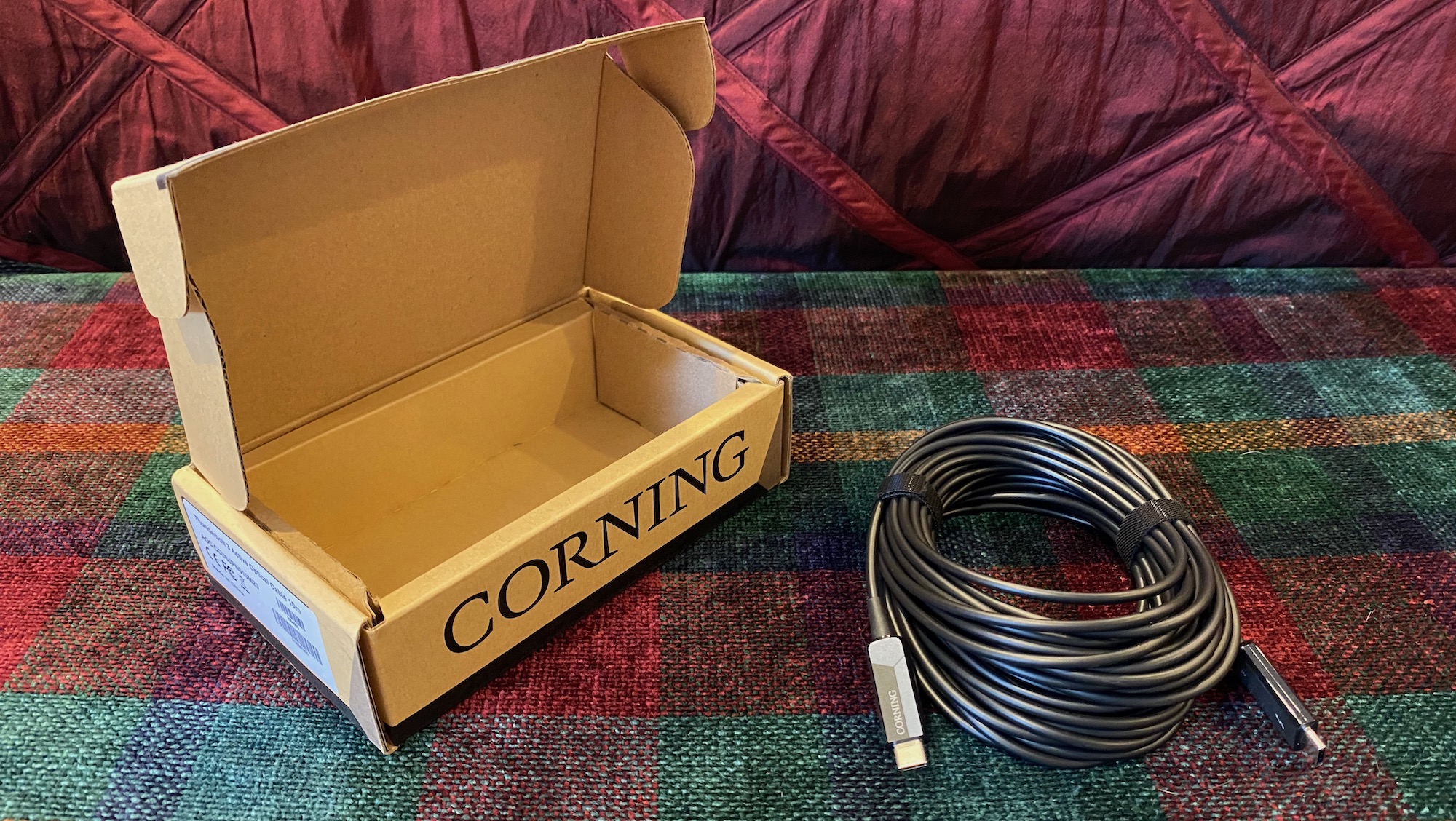
Back in March, we noted that optical Thunderbolt 3 cables were starting to become available some four years after the standard's debut. Availability of these high-end optical cables has taken another step forward recently, as Corning has begun shipping out its cables in lengths ranging from 5 meters to 50 meters.

Corning's 10-meter optical Thunderbolt 3 cable
Compared to passive and active copper Thunderbolt 3 cables that support relatively short lengths most appropriate for a desktop setting, optical cables allow for much longer cable lengths needed by certain professional and corporate users. But for anyone who wants to be able to put their computer and/or accessories like external storage some distance away from their workspace, such as for heat, noise, or aesthetic reasons, these cables are certainly an option.
While optical Thunderbolt 3 cables allow for long cable runs, they do have some limitations compared to traditional copper cables, with one of the most significant being a lack of power capabilities. That means small accessories like external SSDs that need to draw bus power from the host devices they're attached to won't work with optical cables.
Optical Thunderbolt 3 cables also only support Thunderbolt 3 connections and can not fall back to USB modes running at slower speeds, so you won't be able to use one of these optical Thunderbolt 3 cables to directly connect USB-C devices that don't support Thunderbolt 3, for example.
They can, however, be used with Thunderbolt 3 docks that can in turn support a variety of other types of connections such as USB, displays, audio, and more, as the Thunderbolt controller in the dock handles converting everything to run over Thunderbolt. Daisy-chaining of multiple Thunderbolt 3 accessories is also supported with optical cables.

Connectors on optical Thunderbolt 3 cables are a little on the bulky side given the components needed to convert the electrical Thunderbolt 3 signal to an optical one and back. They are, however, only a bit larger than typical passive copper cable connectors and similar in size to active copper cable ones, so they shouldn't block adjacent ports. With only the fiber optic strands inside, the cable itself is also significantly thinner than most traditional USB and Thunderbolt cables.
Unsurprisingly, all of this optical technology comes at a cost that may put these cables out of reach for many consumers. The shortest Corning optical Thunderbolt 3 cable, the 5-meter version, is priced at $360 at vendors like B&H Photo. The price does not, however, rise significantly with cable length as the expensive parts are in the connectors, with 10-meter cables priced at $370, 15-meter cables at $390, 25-meter cables at $410, and, 50-meter cables at $480.
B&H is currently quoting special order status with availability in 7-14 business days for all but the 50-meter version, which is listed as in stock. Corning says significantly improved supplies will be available in just a couple of weeks.
Article Link: Corning's Optical Thunderbolt 3 Cables Now Available in Lengths From 5 to 50 Meters

